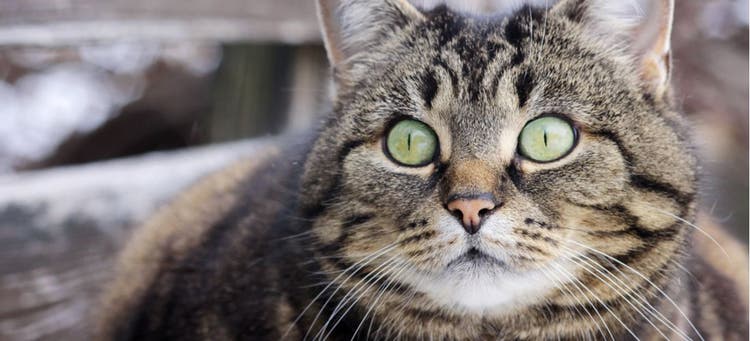
How Do Cats See?
Cats’ eyes are eye-catching enough to lend their name to glasses and marbles, but how do they compare to the human eye? Read on to learn more about how cats see the world and how their visual capabilities stack up to human and canine perception.
Do Cats See in Color?
Yes. As with dogs, it’s a common misconception that cats see the world exclusively in black and white. Some scientists believe that cats can only perceive shades of blue and grey. Others believe that cats perceive a limited color spectrum, like the one seen by color-blind humans. People without red-green color blindness have ten times as many color-sensitive cones in their retinas as cats.
How Does Feline Vision Compare to Human Vision?
Color vision is not the only way that your cat’s eyes differ from your own. In certain respects, feline vision is notably weaker than human vision, but they’ve got our eyes beat in other departments.
Distance
On average, feline visual acuity is not as great as that of the human eye. Humans with 20/20 vision can be counted on to clearly perceive objects at distances between 100 and 200 feet. Cats, for their part, can only get a good, clear look at objects around 20 feet away. If they were human, we’d call them near sighted.
Motion
Cats can’t see as far as pet parents, but they’re better at perceiving small changes in motion. All the better to hunt small, scurrying prey like mice and other rodents. This visual superpower comes thanks to the number of rods found in the feline retina. Unlike cones, which help discern nuances in color, rods are useful for recognizing motion.
Night Vision
Cats most definitely have their human companions beat where night vision is concerned. Like their superior motion-detection abilities, a cat’s night vision also comes thanks to the number of rods in their retinas. Rods are especially useful for making out details and changes in motion in dim light conditions. A thin reflective layer called the tapetum lucidum also powers a cat’s superior night vision. The tapetum (as its colloquially known) features cells that act like a mirror. They essentially allow light to hit the retina twice, providing for especially-strong vision in dim light. The tapetum is responsible for the glow-in-the-dark quality cat eyes often possess. If you’ve ever been startled by your cat’s glowing eyes from across a room, you’ve seen the tapetum lucidum.
Peripheral Vision
Humans perceive the world through a 180-degree field of vision, craning or tilting their necks to perceive anything outside of this semi-circle. Cat eyes are set closer to the side of the head and this positioning allows for a wider field of peripheral vision, about 200 degrees.
Feline Vision vs. Canine Vision
How do dogs and cats’ visual abilities compare? Check out our guide to the canine eye to learn more about how dogs see and how their powers of sight compare to that of cats.